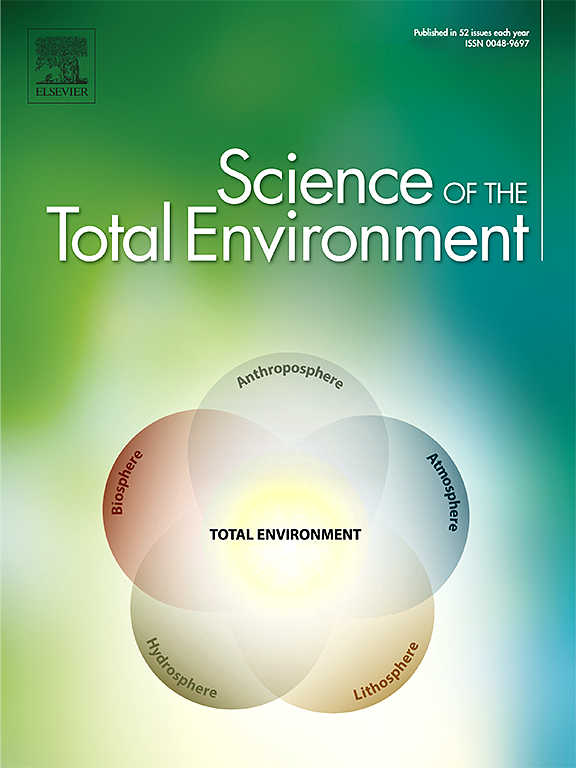Response of soil organic carbon stocks and soil microbial biomass carbon to natural grassland conversion: A global meta-analysis
IF 8.2
1区 环境科学与生态学
Q1 ENVIRONMENTAL SCIENCES
引用次数: 0
Abstract
Natural grasslands worldwide are increasingly being converted into other land-use types, such as cropland and forest, thereby impacting soil carbon cycles and stocks. Soil organic carbon (SOC) is essential for regulating soil properties and microbial communities, while microbial biomass carbon (MBC) is the most active fraction of the SOC pool, both of which play pivotal roles in the global carbon cycle. Here, we performed a meta-analysis on 623 and 85 individual observations from 85 peer-reviewed articles to quantitatively evaluate the effect of grassland conversion on SOCS and MBC. Overall, conversions significantly reduced SOCS and MBC by 10.11 % and 30.63 %, respectively. Notably, the impact varied by conversion type: converting grassland to forest, cropland, and plantation reduced SOCS by 7.69 %, 16.47 %, and 20.55 %, respectively. Meanwhile, converting grassland to cropland and abandoned land decreased MBC by 47.80 % and 38.74 %, respectively. Environmental factors such as mean annual temperature (MAT), mean annual precipitation (MAP), soil total nitrogen (TN), and soil carbon-to‑nitrogen ratio (C/N) influenced these changes. SOCS and MBC were positively correlated with MAT, soil C/N and TN. Specifically, when the C/N or TN of the converted soil exceeded 1.21 or 1.11 times that of the original grassland, SOCS would exhibit a trend of carbon sequestration. Our findings provide valuable insights for global soil carbon sequestration and land use management policies.

求助全文
约1分钟内获得全文
求助全文
来源期刊

Science of the Total Environment
环境科学-环境科学
CiteScore
17.60
自引率
10.20%
发文量
8726
审稿时长
2.4 months
期刊介绍:
The Science of the Total Environment is an international journal dedicated to scientific research on the environment and its interaction with humanity. It covers a wide range of disciplines and seeks to publish innovative, hypothesis-driven, and impactful research that explores the entire environment, including the atmosphere, lithosphere, hydrosphere, biosphere, and anthroposphere.
The journal's updated Aims & Scope emphasizes the importance of interdisciplinary environmental research with broad impact. Priority is given to studies that advance fundamental understanding and explore the interconnectedness of multiple environmental spheres. Field studies are preferred, while laboratory experiments must demonstrate significant methodological advancements or mechanistic insights with direct relevance to the environment.
 求助内容:
求助内容: 应助结果提醒方式:
应助结果提醒方式:


